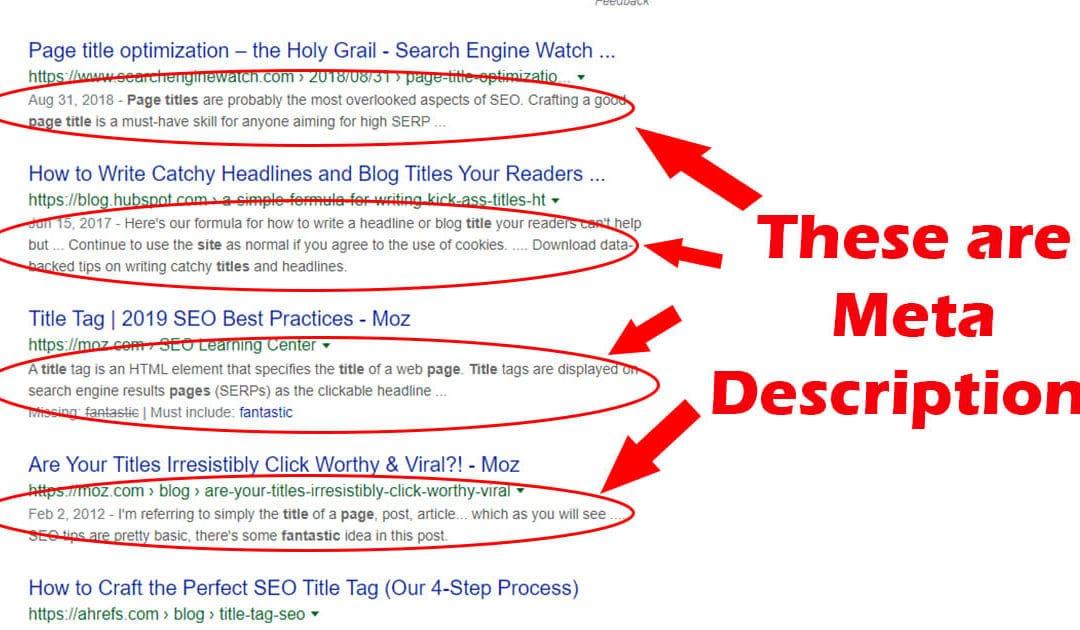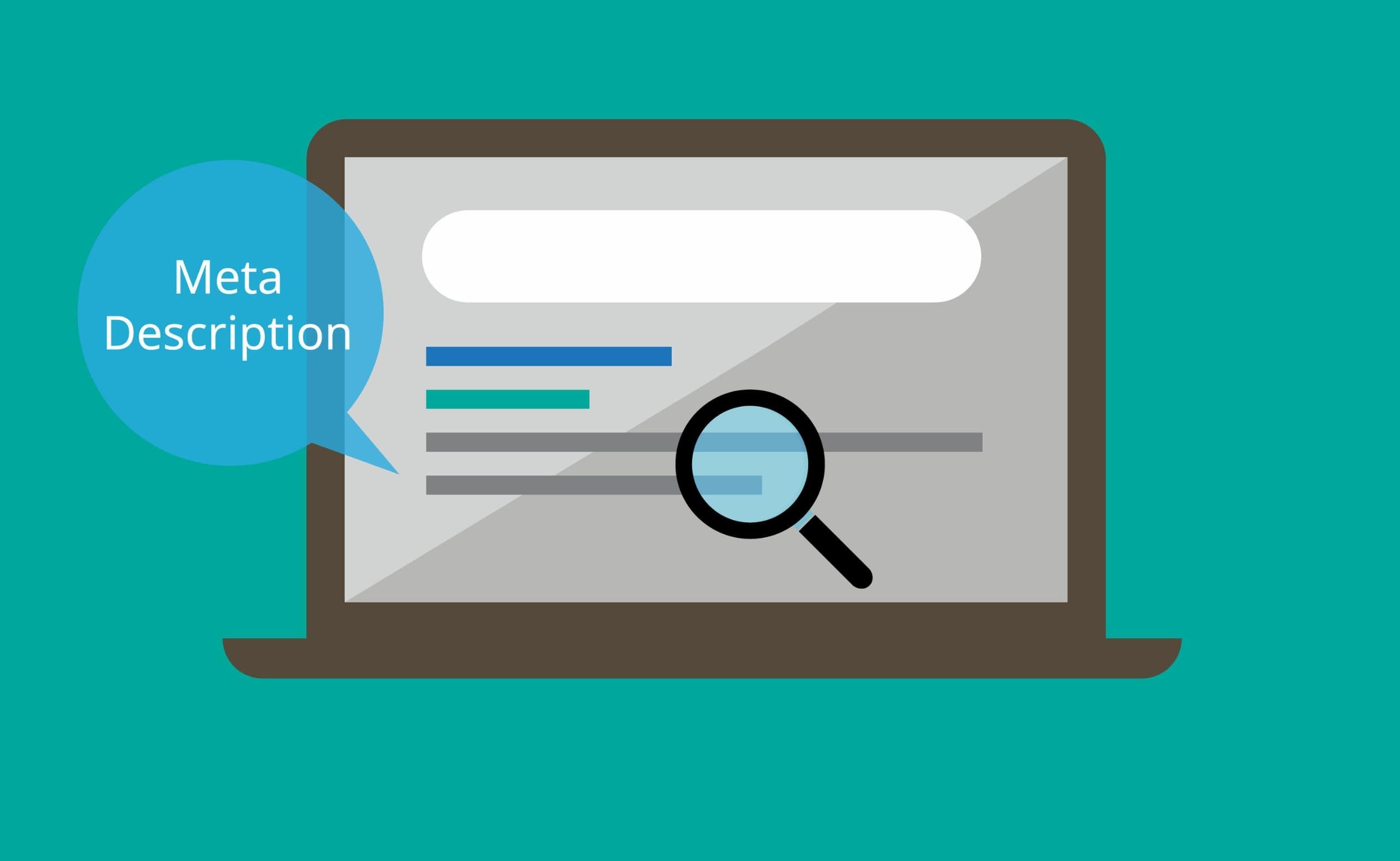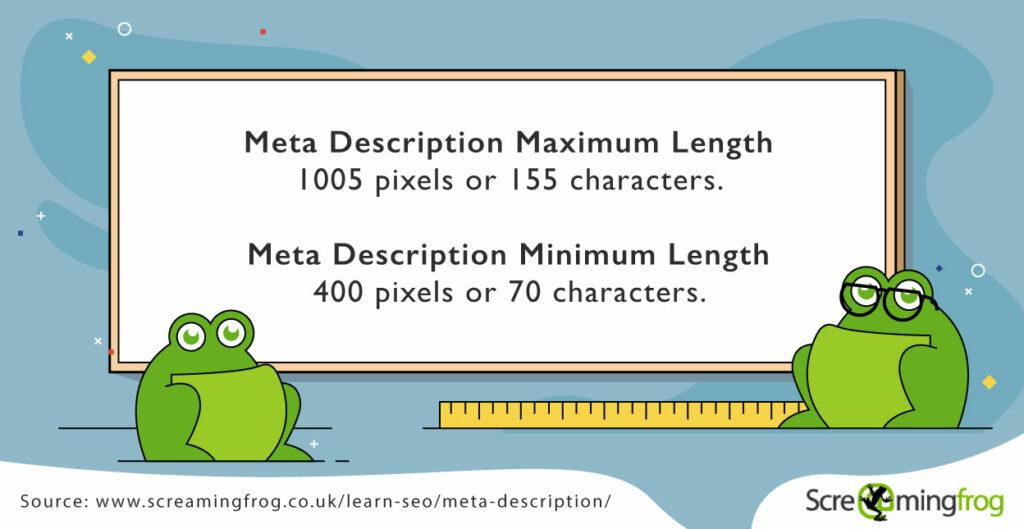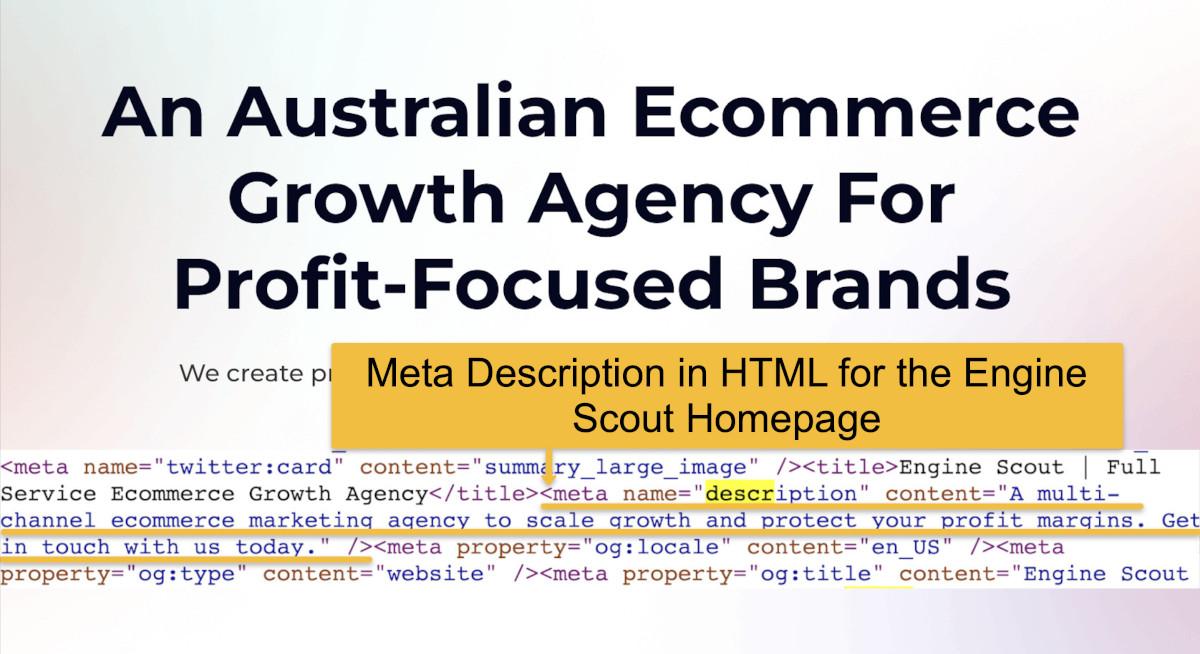Unlock the secret to boosting your click-through rates with our guide on crafting perfect meta descriptions! Dive into 18 engaging examples and learn how to write compelling snippets that entice readers and enhance your SEO game. Let’s get started!
18 Meta Description Examples, Plus How to Write a Perfect Meta Description
Unlocking the Power of Meta Descriptions: 18 Examples to Elevate Your SEO Game
In the vast ocean of digital content, how do you ensure that your website stands out? Enter the unsung hero of search engine optimization: the meta description. You might not think much about these brief snippets of text, but they play a crucial role in attracting clicks and boosting your visibility online. A well-crafted meta description can be the difference between someone choosing to visit your site or scrolling past it in favor of a competitor.
But don’t worry if you’re unsure how to write a compelling one! In this article, we’ll dive into 18 stellar meta description examples that can inspire your next creation. Whether you’re a seasoned marketer or a small business owner just getting started, understanding the art of the meta description is essential. By the end, you’ll be equipped with the knowledge and techniques to write perfect descriptions that not only catch the eye but also drive traffic to your site. Ready to transform your clicks into customers? Let’s get started!
Understanding the Power of Meta Descriptions in SEO
Meta descriptions are a crucial element of SEO that often go overlooked. They serve as the first impression of your content, appearing under the page title in search engine results. A well-crafted meta description can significantly improve your click-through rates, enticing potential visitors to engage with your content.
What makes a great meta description? Here are some key elements:
- Conciseness: Aim for 150-160 characters to ensure your description isn’t cut off in search results.
- Relevance: Include essential keywords that reflect the content of your page.
- Call to Action: Encourage clicks by using action-oriented language, like “Discover,” “Learn,” or “Join.”
Here’s why meta descriptions matter:
- Enhanced Visibility: A compelling description can help your listing stand out among competitors.
- Improved CTR: Searchers are more likely to click on results that intrigue them.
- SEO Benefits: While meta descriptions themselves aren’t a direct ranking factor, higher CTR can lead to improved rankings over time.
When writing your meta descriptions, consider these actionable tips:
- Highlight Unique Selling Points: What sets your content apart? Make it clear in your description.
- Use Active Voice: This can create a sense of urgency and excitement about your content.
- Test and Optimize: Don’t hesitate to revise your descriptions based on performance analytics.
| Element | Description |
|---|---|
| Length | 150-160 characters |
| Keyword Usage | Incorporate primary keywords |
| Emotional Appeal | Use persuasive language |
| Relevance | Reflect page content accurately |
Ultimately, mastering the art of the meta description can lead to increased visibility and engagement for your website. So take the time to craft descriptions that not only summarize your content but also resonate with your audience’s intent and curiosity.

What Makes a Meta Description Effective
Crafting an effective meta description is an art that can significantly influence your click-through rates and search engine visibility. A well-written meta description serves as a mini-advertisement for your webpage, compelling users to click on your link over others. Here are some essential elements to consider:
- Conciseness: Aim for 150-160 characters to ensure that your description doesn’t get cut off in search results. Brevity combined with clarity is key.
- Relevance: Make sure the content aligns closely with the webpage. This helps set the right expectations for users while reinforcing the page’s SEO.
- Action-oriented language: Use verbs that encourage action. Phrases like “Discover,” “Learn,” or “Explore” create a sense of urgency and intrigue.
- Inclusion of keywords: Strategically place primary keywords in your description. This not only aids in SEO but also assures users that your content is relevant to their search.
- Unique selling proposition (USP): Highlight what makes your page stand out. Whether it’s a unique feature, an exclusive offer, or valuable information, make your USP clear.
Here’s a simple table showcasing ineffective versus effective meta descriptions:
| Type | Example |
|---|---|
| Ineffective | “Welcome to our website. We have many products for you.” |
| Effective | “Unlock exclusive deals on eco-friendly products. Shop now to save 20% on your first order!” |
Personalization can also give your meta description an edge. Tailor your descriptions to specific audience segments by incorporating language and sentiments that resonate with them. This can involve using demographic indicators or addressing common pain points.
don’t forget to A/B test your meta descriptions. Experiment with different styles and phrasing to see what resonates most with your audience. The digital landscape is constantly changing, and what works today may not be as effective tomorrow. Keep refining your approach for the best results!
Key Elements to Include for Maximum Impact
To create a meta description that captures attention and drives clicks, focus on incorporating these vital components:
- Target Keywords: Include the primary keywords relevant to your content. This not only helps with SEO but also ensures that users immediately see the relevance of your page.
- Compelling Call-to-Action: Encourage users to take action by using phrases like “Discover,” “Learn,” or “Get Started.” A strong call-to-action can significantly increase your click-through rates.
- Unique Selling Proposition: What makes your content stand out? Highlight unique features or benefits that differentiate your offering from competitors. This could be a special discount, a unique perspective, or exclusive information.
- Character Limit: Keep your meta description between 150-160 characters. This ensures that your description is fully visible in search engine results, making it easier for users to read and engage.
- Engaging Language: Use persuasive and lively language. Words that evoke emotion or urgency can effectively draw readers in and prompt them to click your link.
Here’s a quick comparison of effective versus ineffective meta descriptions:
| Effective Meta Description | Ineffective Meta Description |
|---|---|
| “Unlock your potential with our expert-led courses. Join today for a special discount!” | “We offer courses.” |
| “Discover the secrets of the universe in our latest blog. Click to explore!” | “Our blog has new content.” |
| “Get ready for summer with our ultimate guide to fashion trends. Don’t miss out!” | “Check our website for fashion.” |
By weaving these elements together seamlessly, you can craft meta descriptions that not only inform but also entice your audience to click through to your site. Remember, the goal is to present a snippet that offers just enough intrigue to encourage potential visitors to want to learn more. Tailor your descriptions to fit your audience and always keep testing different versions to see what resonates best!
Crafting Your Meta Description: Tips and Tricks
Crafting a compelling meta description can significantly enhance your click-through rates and improve your overall SEO. Here are some tips and tricks to help you create an irresistible meta description:
- Keep it concise: Aim for 150-160 characters. This ensures your description doesn’t get cut off in search results.
- Incorporate keywords: Use primary keywords naturally to help search engines understand your content and attract the right audience.
- Create a call to action: Encourage users to click by using phrases like “Learn more,” “Discover,” or “Get started today.”
- Highlight unique selling points: What makes your content stand out? Mention benefits or features that will appeal to your target audience.
- Match the tone of your content: Ensure that the voice in your meta description aligns with your content to set the right expectations for readers.
To demonstrate how effective meta descriptions can vary, here’s a simple table showcasing examples of good practices:
| Example | Why It Works |
|---|---|
| “Unlock the secrets of SEO with our expert tips and strategies.” | Uses action-oriented language and promises valuable information. |
| “Join our community of creators and elevate your skills today!” | Encourages engagement and highlights community benefits. |
| “Discover unique recipes that will impress your guests at every meal.” | Appeals directly to the reader’s desire to impress others. |
Don’t forget to A/B test different versions of your meta descriptions. This allows you to see which ones resonate most with your audience and drive the highest click-through rates. Analyze the performance, tweak your descriptions as needed, and continue to optimize.
remember that while meta descriptions don’t directly impact search rankings, they play a crucial role in attracting clicks. A well-crafted description can be the difference between a user choosing your link over a competitor’s, so take the time to make it shine.

Common Mistakes to Avoid When Writing Meta Descriptions
Writing a compelling meta description is essential for driving clicks from search engine results, but many fall into a few common traps. Avoiding these pitfalls can make a significant difference in how your page performs in search rankings and user engagement.
One of the most prevalent mistakes is writing overly generic descriptions. A bland description fails to capture attention or differentiate your content from competitors. To engage users, ensure your description is tailored to the specific content of the page. Instead of saying, “We sell shoes,” try something more enticing like, “Step into style with our exclusive range of eco-friendly shoes designed for comfort and fashion.” This approach not only informs but also intrigues potential visitors.
Another frequent error is exceeding the recommended character limit. Google typically displays around 150-160 characters of the meta description in its search results. If your description is too long, it will get cut off, potentially losing important information. To illustrate the point, here’s a quick comparison:
| Description Type | Character Count | Display Status |
|---|---|---|
| Optimal Example | 150 | Fully Displayed |
| Too Long Example | 180 | Cut Off |
Additionally, many writers neglect to include a call to action (CTA). A strong CTA can significantly enhance click-through rates by encouraging users to take action. Phrases like “Discover more,” “Shop now,” or “Learn the secrets” can create a sense of urgency and prompt users to click. Without a CTA, your description might lack the persuasive edge needed to convert interest into action.
avoid keyword stuffing in your meta descriptions. While it’s essential to include relevant keywords for SEO, overloading your description with them can appear spammy and off-putting. Aim for a natural flow that integrates keywords seamlessly. For instance, instead of cramming “sustainable shoes” multiple times, a well-placed mention together with engaging content can boost your SEO without sacrificing readability.
By steering clear of these common mistakes, you can craft meta descriptions that not only comply with SEO best practices but also resonate with your audience, ultimately driving more traffic to your site.
Exploring 18 Real-Life Meta Description Examples
Crafting an effective meta description is essential for improving your website’s click-through rate (CTR) from search engine results pages (SERPs). Let’s dive into some real-life examples that showcase what makes a meta description stand out. We’ll explore how these snippets effectively communicate value, entice clicks, and align with search intent.
Real-Life Meta Description Examples
| Website | Meta Description | What Works |
|---|---|---|
| Shopify | “Start your free trial today to create an online store that sells anything.” | Highlights a free trial, using urgency and value. |
| Airbnb | “Find unique places to stay with local hosts in 191+ countries.” | Emphasizes uniqueness and local experiences. |
| HubSpot | “Learn how to grow your business with our free tools and resources.” | Offers free resources, appealing to cost-conscious users. |
| Canva | “Create stunning designs for free with Canva’s drag-and-drop editor.” | Clear call-to-action and emphasizes ease of use. |
These examples illustrate the importance of clarity and value in meta descriptions. Each description successfully conveys a key benefit that resonates with potential users. Let’s look at a few more examples that make a strong impact.
- LinkedIn: “Discover the right job for you with tools to enhance your search.”
- BBC: “Stay updated with breaking news, sports, and weather from around the world.”
- Evernote: “Capture, organize, and share notes seamlessly across all devices.”
Each of these meta descriptions is tailored to highlight what the user can expect, encouraging engagement. When writing your own, aim for a character count of around 150-160 characters, ensuring your message is concise but informative.
Remember, the key to a successful meta description lies in its ability to entice and inform at the same time. By using actionable language, incorporating relevant keywords, and focusing on the benefits, you can create meta descriptions that are not only clickable but also resonate with your target audience.

How to Tailor Your Meta Description for Different Audiences
When crafting a meta description, it’s crucial to consider the diverse audience segments that may encounter your content. Different demographics, interests, and pain points can greatly influence how you should tailor your message. Here are some effective strategies to customize your meta descriptions:
- Identify Your Audience: Understand who your target readers are. Are they professionals, students, or hobbyists? Tailor your language and tone accordingly.
- Highlight Key Benefits: What does your audience stand to gain? Use phrases that resonate with their specific needs and desires.
- Use Language That Speaks to Them: Adjust your vocabulary to match your audience’s familiarity. For instance, use technical jargon for industry professionals, or simpler terms for a general audience.
- Incorporate Emotional Triggers: People are driven by emotions. Incorporate words that evoke curiosity, urgency, or excitement to draw them in.
For example, if your content is aimed at professionals seeking career advice, a meta description like “Unlock your potential with expert career tips designed for ambitious professionals” speaks directly to their aspirations. Conversely, if your audience consists of students, you might say, “Discover simple strategies to ace your exams and boost your grades!” This difference in wording can make all the difference in engagement.
Consider using a table to compare different approaches for various audiences:
| Audience Type | Meta Description Example |
|---|---|
| Tech Enthusiasts | “Dive into the latest trends in tech with our expert insights and innovative resources.” |
| Parents | “Find the best parenting hacks to make everyday family life easier and more enjoyable.” |
| Health Conscious Individuals | “Transform your health with practical tips and delicious recipes that are easy to prepare.” |
Ultimately, the key to a compelling meta description lies in understanding your audience’s mindset. Don’t shy away from A/B testing your meta descriptions to see which resonates best. Analyze click-through rates and adjust language, style, or focus based on the data you collect. By continually refining your approach, you can create meta descriptions that not only attract attention but also drive meaningful engagement with your content.

The Role of Keywords in Your Meta Description Strategy
When crafting your meta descriptions, the strategic use of keywords cannot be overstated. Keywords serve as the backbone of your search engine optimization (SEO) efforts, directly influencing how potential visitors perceive and interact with your content. A well-placed keyword or phrase can capture the attention of users scanning through search results, enticing them to click through to your site.
Incorporating relevant keywords into your meta descriptions not only helps search engines understand the content of your page but also aligns with user intent. Consider these key points when developing your keyword strategy:
- Relevance: Choose keywords that are directly related to the content of your page. Misleading keywords may lead to higher bounce rates.
- Search Volume: Utilize keyword research tools to find terms that have a good balance of search volume and competition.
- Emotional Triggers: Incorporate keywords that resonate with your audience’s emotions or needs, encouraging them to click.
To maximize the effectiveness of your keywords, aim to integrate them naturally within the description. A forced or awkward placement can turn users away instead of drawing them in. For instance, instead of cramming in multiple keywords, focus on a primary keyword and support it with secondary phrases that enhance the overall message.
Here’s a simple table to illustrate how to align your keywords with user intent:
| Keyword | User Intent | Meta Description Example |
|---|---|---|
| Best running shoes | Looking for recommendations | Discover the best running shoes of 2023 to elevate your performance and comfort. |
| DIY home decor | Seeking project ideas | Explore creative DIY home decor ideas that will transform your space on a budget. |
| Healthy meal prep | Wanting to save time and eat well | Master the art of healthy meal prep with our easy recipes and time-saving tips! |
Lastly, keep in mind that the optimal length for meta descriptions typically falls between 150-160 characters. This ensures that your entire description appears in search results without being truncated. Monitor how your meta descriptions perform over time; A/B testing different variations can provide insights into which keywords and phrasing resonate best with your audience.

Testing and Analyzing Your Meta Descriptions for Success
Once you’ve crafted your meta descriptions, it’s essential to put them to the test. Analyzing their performance can reveal valuable insights and help you refine your approach. Here are some strategies to consider:
- A/B Testing: Create two variations of your meta description for the same page and monitor which one drives more clicks. Use tools like Google Search Console to track performance metrics.
- Click-Through Rate (CTR): Evaluate the CTR of your search results. A higher CTR indicates that your meta description resonates with your audience. Identify successful phrases or formats that entice users.
- Competitor Analysis: Look at how competitors structure their meta descriptions. What keywords are they using? How do they engage their audience? This can provide inspiration and insights into industry standards.
Don’t forget to integrate the feedback you gather into your next round of meta descriptions. This iterative process is key to continuous improvement and can significantly impact your overall SEO strategy.
| Performance Metric | Description |
|---|---|
| CTR | Percentage of clicks from impressions for your page. |
| Impressions | The number of times your page appears in search results. |
| Average Position | Your page’s average ranking in search results. |
| Bounce Rate | Percentage of visitors who leave your page without interacting. |
Another important factor is keeping your meta descriptions fresh. Search engines love new content, and updating your descriptions can revive older pages and attract more clicks. Consider seasonal changes, trending topics, or new offers when revisiting your meta descriptions.
Lastly, remember that the ultimate goal is to align your meta descriptions with user intent. By focusing on what your audience is searching for and providing compelling reasons to click through, you’ll not only improve your SEO ranking but also enhance the overall user experience on your site.

Final Thoughts on Mastering the Art of Meta Descriptions
Mastering the art of meta descriptions is crucial for anyone looking to enhance their online presence. These small snippets of text, while often overlooked, play a significant role in driving click-through rates from search engine results pages (SERPs). A well-crafted meta description not only summarizes the content of a page but also serves as a compelling invitation for users to engage with your site.
When writing meta descriptions, keep the following tips in mind:
- Be Concise: Aim for around 150-160 characters to ensure your description is fully displayed in search results.
- Use Active Voice: Encourage action by using verbs that prompt users to click.
- Include Keywords: Naturally incorporate relevant keywords to improve visibility and relevance.
- Reflect Content: Ensure that your description accurately represents the content of the page to avoid misleading readers.
- Add a Call to Action: Phrases like “Learn more” or “Discover now” can significantly boost engagement.
To illustrate the impact of a strong meta description, consider how they can influence user behavior. A/B testing various versions of your descriptions can uncover insights about what resonates with your audience. For instance, a description that poses a question can engage curious users, while one that highlights a unique benefit may attract those looking for solutions.
Here’s a simple comparison of effective versus ineffective meta descriptions:
| Effective Meta Description | Ineffective Meta Description |
|---|---|
| “Unlock the secrets of perfect pancakes with our easy, step-by-step guide!” | “Pancakes recipe” |
| “Transform your garden into an oasis with our expert tips and tricks.” | “Garden tips” |
Ultimately, the goal is to create meta descriptions that not only attract clicks but also set the right expectations for users. Delivering on what you promise in your description can lead to decreased bounce rates and improved user satisfaction. A little thoughtfulness in your meta descriptions can yield significant dividends in your content’s performance.
As you refine your meta description writing skills, remember that practice makes perfect. Regularly revisiting and updating your existing descriptions can keep your content fresh and relevant, while also providing an opportunity to experiment with different styles and approaches. With a keen understanding of your audience and a strategic approach, you can master the art of crafting compelling meta descriptions that drive traffic and engagement.
Frequently Asked Questions (FAQ)
Sure! Here’s a Q&A section for your article on “18 Meta Description Examples, Plus How to Write a Perfect Meta Description.”
Q1: What exactly is a meta description, and why is it important?
A1: Great question! A meta description is a brief summary of a web page’s content, typically around 150–160 characters. It appears in search engine results below the page title. Think of it as your website’s elevator pitch! A well-crafted meta description can significantly increase your click-through rate (CTR) by enticing users to click on your link over others. It’s crucial because it serves as the first impression of your content in search results.
Q2: Can you give me some examples of effective meta descriptions?
A2: Absolutely! Here are a few examples that hit the mark:
- Travel Blog: “Discover the hidden gems of Italy! From vibrant cities to serene countryside—your ultimate travel guide awaits.”
- E-commerce Site: “Shop our exclusive collection of eco-friendly products. Sustainable living has never looked so stylish!”
- Recipe Website: “Craving comfort food? Try our easy, mouth-watering lasagna recipe that’s ready in 30 minutes!”
These examples are enticing, informative, and encourage users to click through for more.
Q3: What are some common mistakes to avoid when writing a meta description?
A3: Ah, the pitfalls! Here are some common traps:
- Being Too Generic: Avoid vague descriptions. Be specific about what the user will find.
- Overstuffing Keywords: While it’s important to include relevant keywords, cramming too many in can sound unnatural.
- Neglecting a Call-to-Action (CTA): Always encourage users to take action, whether it’s “Learn More,” “Shop Now,” or “Get Started.”
Steering clear of these mistakes will help your meta descriptions shine!
Q4: How long should my meta description be?
A4: Ideally, you want your meta description to be between 150 and 160 characters. This length is typically displayed fully in search results, ensuring your message is not cut off. Think concise and compelling!
Q5: Can I change my meta descriptions later?
A5: Absolutely! In fact, it’s a good practice to revisit and update your meta descriptions periodically. As trends change or you refine your content, adjusting your meta descriptions can help maintain or improve your rankings and CTR.
Q6: What tips do you have for writing the perfect meta description?
A6: Here’s your checklist for crafting the perfect meta description:
- Be Clear and Concise: Clearly state what your page is about.
- Use Active Voice: It’s more engaging!
- Incorporate Keywords Naturally: Make sure to include relevant keywords, but ensure they fit seamlessly within the text.
- Include a CTA: Encourage readers to take action!
Following these tips will set you on the path to writing meta descriptions that convert!
Feel free to tweak any of the responses to better fit the style or focus of your article!
To Wrap It Up
And there you have it! With these 18 meta description examples and our tips on crafting the perfect one, you’re now well-equipped to enhance your website’s visibility and click-through rates. Remember, a well-written meta description isn’t just a summary; it’s your chance to connect with potential visitors and entice them to explore what your site has to offer.
So, don’t leave this crucial element of your SEO strategy to chance. Take some time to refine your meta descriptions, and watch as your search engine rankings improve and your audience grows.
Happy writing, and may your clicks be plenty! If you have any questions or want to share your own tips, feel free to drop a comment below. We’d love to hear from you!





